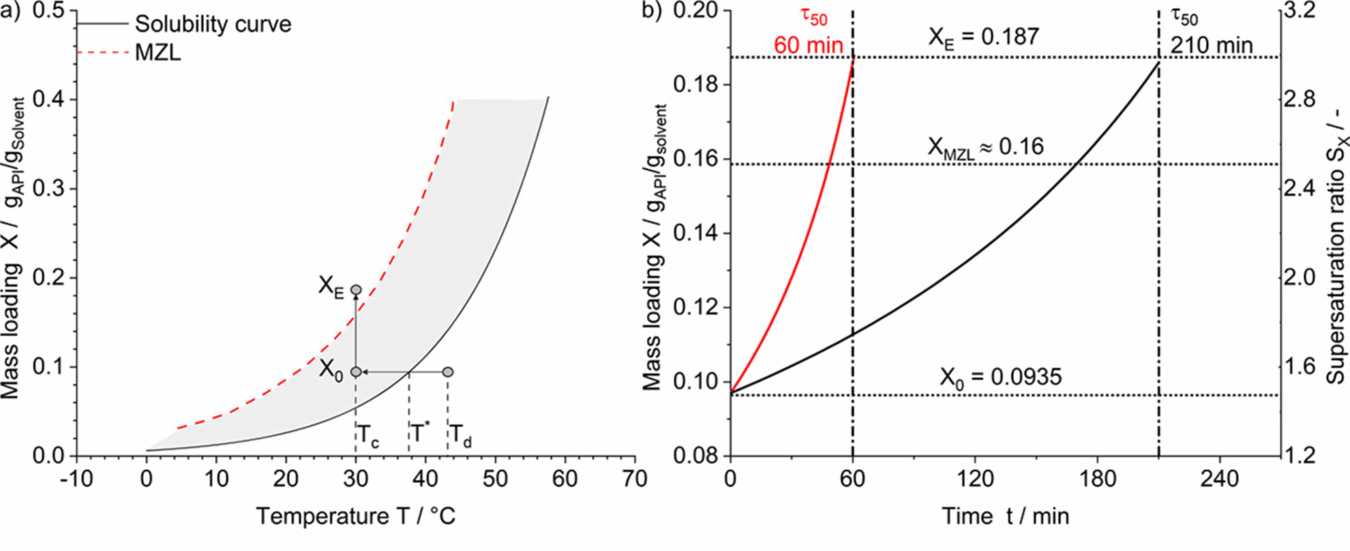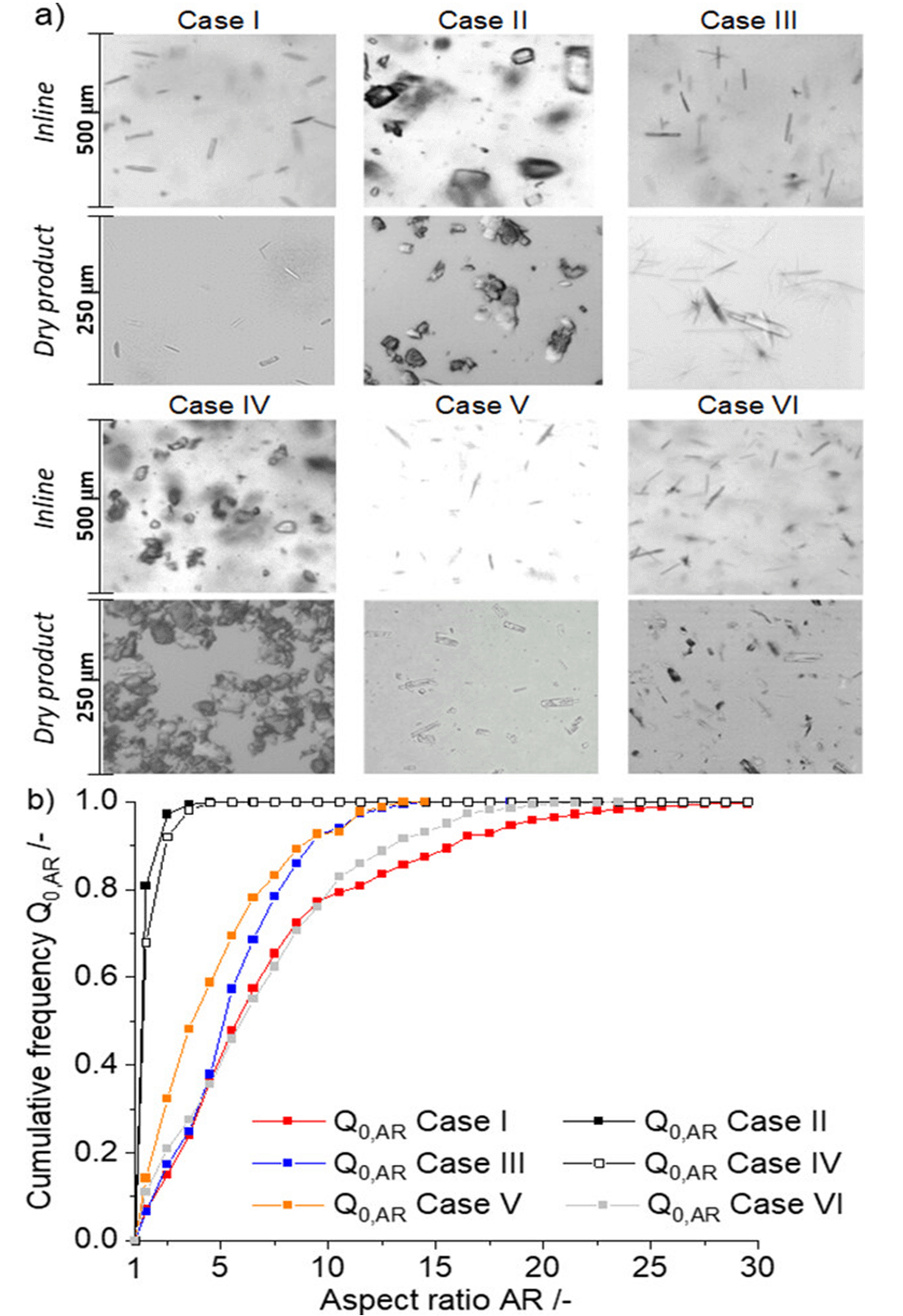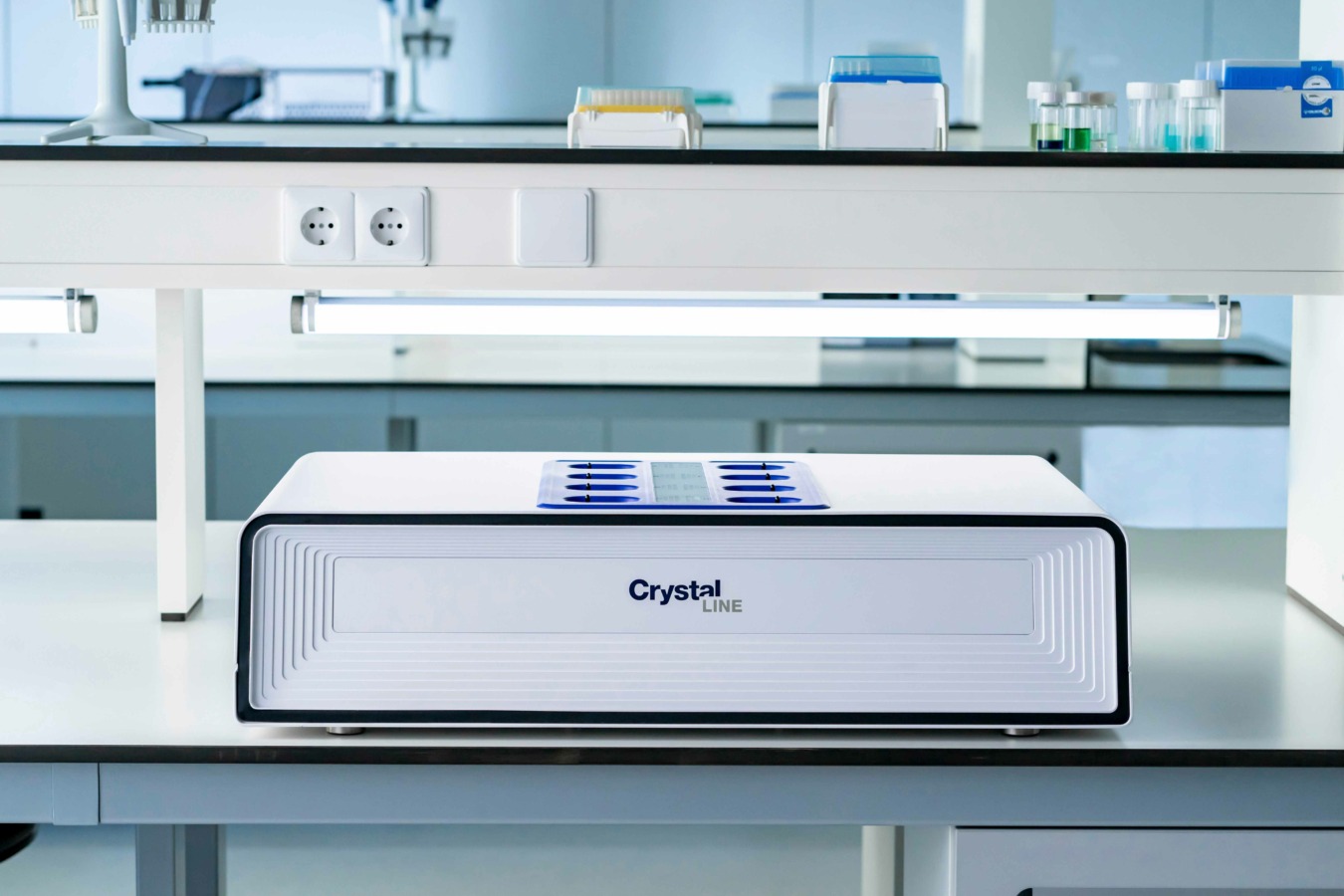Evaporative crystallization with Crystalline
In this research paper titled A Comprehensive Workflow towards More Equant-Shaped Crystals of Active Pharmaceutical Ingredients, authored by a team of researchers from Karlsruhe Institute of Technology, the Crystalline instrument from Technobis was used to develop the workflow that controls crystal morphology.
About the paper:
The study presents a comprehensive workflow aimed at optimizing the crystal morphology of Active Pharmaceutical Ingredients (APIs) using a miniaturized Crystalline multi-reactor system for controlled isothermal evaporative crystallization. By focusing on process parameters such as solvent selection, supersaturation, temperature, and seeding, the research identifies conditions that favour the formation of more equant-shaped crystals. This approach not only ensures minimal material usage but also facilitates clear morphology-process condition relationships through inline imaging.
Experiment procedure
Three model APIs—Bitopertin (Form A), Balapiravir Hydrochloride, and a DPP-IV Inhibitor—were selected for crystallization experiments using the augmented Crystalline system. The instrument allowed for controlled isothermal evaporation and inline imaging to analyze crystal morphology.
The workflow included:
- determining solubility and metastable zone limits (MZL) through temperature variation and solution transmissivity;
- designing experiments with a full factorial approach focusing on supersaturation rate, crystallization temperature, seeding, and solvent type;
- conducting controlled isothermal batch evaporative crystallization with specific mass loadings;
- using Crystalline’s inline imaging to calculate the aspect ratio (AR) of the crystals.
Results
Solvent Selection and Phase Diagrams:
The methodology effectively narrowed down the number of solvents, providing a diverse landscape for crystallization. The solubility curves and MZLs indicated varying crystallization potentials, influencing crystal morphology significantly (see figure below).

Figure: (a) Phase diagram of Bitopertin in ethanol (b) Course of supersaturation and mass loading of the solution for two different evaporation rates (τ50 = 60 and 210 min).
Results (continued)
Effect of Supersaturation Rate:
Experiments with different evaporation rates demonstrated that slower rates favoured the formation of more equant crystals, while faster rates led to needle-like morphologies. This was evident in the AR distribution, where slow evaporation resulted in AR values closer to 1, indicating isometric crystals.
Temperature Influence:
Crystallization at higher temperatures (45°C and 55°C) with slower evaporation rates produced more equant crystals, while lower temperatures (30°C and 15°C) led to acicular crystals.
Seeding Effect:
Seeded experiments consistently produced more uniform and equant crystals compared to unseeded ones. The presence of seed crystals facilitated controlled growth, depleting supersaturation gradually and promoting uniform morphology.
Solvent Impact:
Different solvents significantly affected crystal morphology. For example, Bitopertin crystallized in ethanol at 45°C produced isometric crystals, whereas 1-propanol and 2-propanol under similar conditions resulted in needle-like crystals. This was attributed to differences in supersaturation at nucleation onset values among solvents.

Figure: (a) Images acquired by Crystalline and after solid‐liquid separation (dry product) (b) Particle number based cumulative distribution of the AR based on the inline images.
Conclusion
The proposed workflow and experimental setup successfully identified process conditions for producing more equant-shaped crystals of APIs. The Crystalline system with inline imaging proved effective for detailed morphology analysis and understanding crystallization kinetics. The findings suggest that controlled isothermal evaporative crystallization, combined with strategic solvent selection and process parameter optimization, can significantly enhance crystal morphology.

References
The research paper discussed above was authored by the team of researchers Nicolás Antonio Ramos Ojeda and Matthias Kind from Karlsruhe Institute of Technology (KIT).
The full paper is published here: https://onlinelibrary.wiley.com/doi/full/10.1002/ceat.202300314
Curious to learn more?
See what the Crystalline instrument can do for your solid-state, formulation and process development studies.